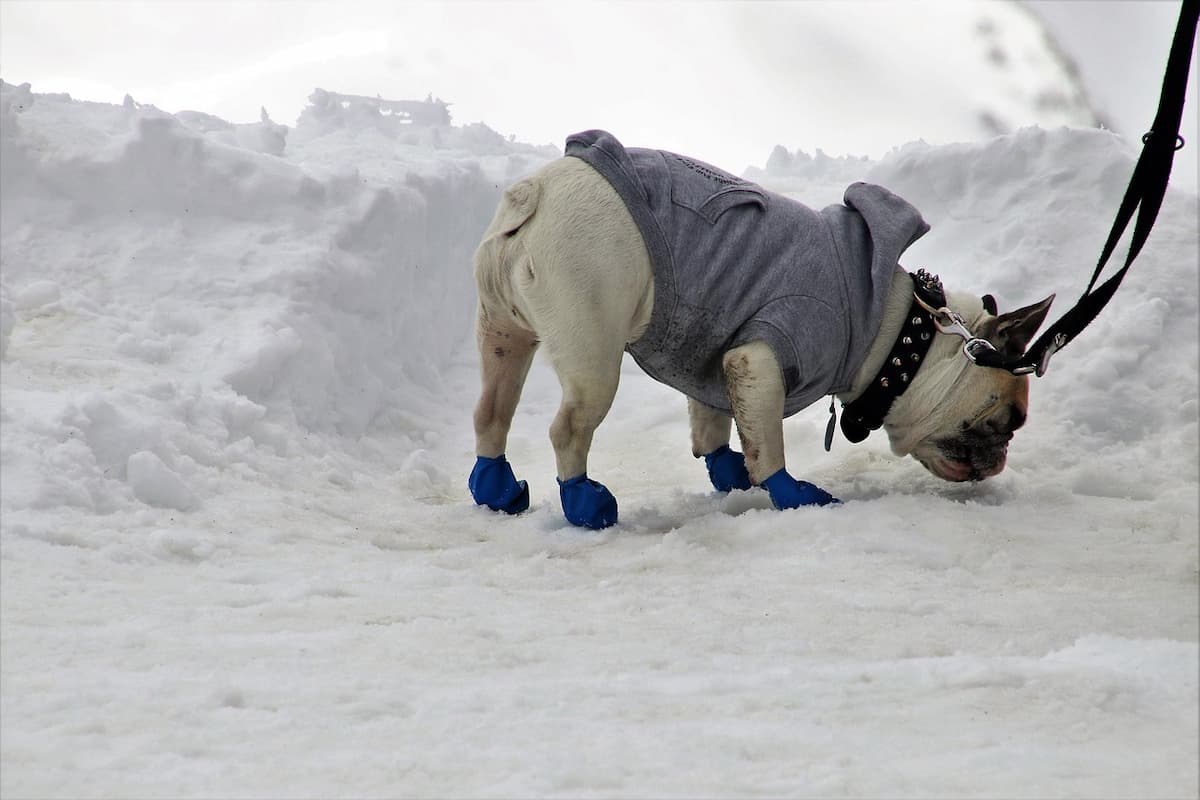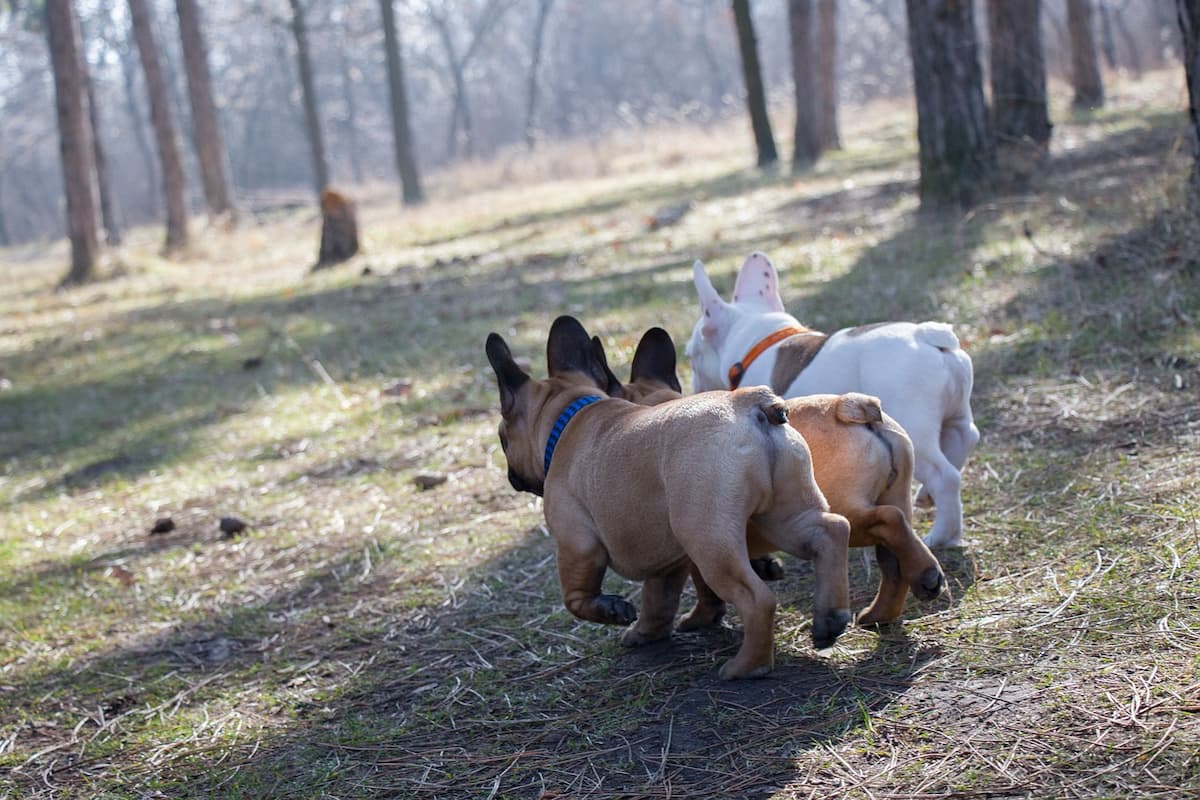Have you ever caught your furry friend doing the “scoot of shame” across the living room carpet?
You know the one I’m talking about – that slightly embarrassing moment when your beloved dog starts dragging their butt along the floor.
As pet owners, we have all witnessed this peculiar behavior, and let’s be honest, it’s hard not to giggle.
But have you ever wondered why dogs do this?
Read on to find the fascinating facts.
Why do Dogs Drag Their Butts on the Carpet?
Dogs and their quirky behaviors never fail to amaze us, but one puzzling habit that often leaves owners scratching their heads is the infamous butt dragging on the carpet.
You know the scene – your beloved pooch suddenly plops down, rubs their bottom against the floor, and starts scooting away like they’re on a mission.
You may wonder why they engage in this embarrassing behavior.
You’d be surprised to learn the fascinating facts behind this behavior.
First and foremost, it’s essential to understand that dogs have a complex glandular system that includes two prominent scent glands near their anus, aptly named anal glands.
These glands play a vital role in a dog’s communication and territorial marking, secreting a unique odor that is distinctly their own.
However, sometimes these glands can become obstructed or overfilled, causing discomfort or irritation for our canine pals.
When this happens, rubbing their rump on the carpet can be a desperate attempt to relieve the pressure and alleviate discomfort.
Another possible reason for your pup’s carpet scooting antics could be a case of itchiness or irritation around the anal area.
Just like humans, dogs can develop allergies, skin conditions, or pesky parasites like fleas and ticks, which can lead to itchiness and discomfort.
In their pursuit of relief, dogs may resort to dragging their behinds along the carpet, hoping to scratch that aggravating itch.
If you notice excessive scooting paired with redness, swelling, or persistent scratching, it’s always wise to schedule a veterinary visit to rule out any underlying health issues.
Gastrointestinal issues are another potential cause of butt-dragging behavior in dogs.
Digestive troubles, such as diarrhea or constipation, can create discomfort and itching around the rectal area.
In an attempt to find relief, dogs may resort to dragging their bottoms on the carpet.
Additionally, parasites like fleas or worms can also prompt dogs to engage in butt-dragging to alleviate itching.
These unwanted creatures can irritate the anal area, causing your dog’s bottom to become excessively itchy.
Preventing and Addressing Anal Gland Issues in Dogs
To prevent and address anal gland issues in your dog, there are several steps you can take.
First and foremost, maintaining good hygiene is crucial.
Regularly check your dog’s anal area for any signs of swelling, redness, or discharge.
If you notice any abnormalities, it’s essential to consult your veterinarian for a proper diagnosis and treatment.
Additionally, keeping your dog’s bowel movements regular and firm can help prevent anal gland problems.
A high-fiber diet, such as one that includes pumpkin or psyllium husk, can promote healthy digestion and reduce the chance of gland impaction.
Furthermore, providing your pup with plenty of exercise can help regulate their bowel movements and overall digestive health.
Finally, some dog breeds are more prone to anal gland issues than others, so it’s important to be mindful of your pet’s breed-specific risks.
Breeds with smaller body size, such as Chihuahuas or Dachshunds, are more susceptible to anal gland problems.
Regular expression of the anal glands by a trained groomer or your veterinarian may be necessary to prevent impaction or infection.
Remember, understanding the reasons behind butt-dragging in dogs is the first step to preventing and addressing anal gland issues.
By practicing good hygiene, promoting regular bowel movements, and seeking professional help when needed, you can ensure your furry friend stays comfortable and avoids those awkward carpet-sliding moments.
Your dog’s behind will thank you!
Tips for Managing a Dog’s Butt-dragging Behavior
One of the most perplexing and often embarrassing behaviors that dogs engage in is butt-dragging on the carpet.
As a pet owner, it can leave you feeling frustrated and at a loss for what to do.
Fortunately, understanding the possible reasons behind this behavior can help you manage it effectively and prevent any potential health issues for your furry friend.
Firstly, one possible explanation for why dogs drag their butts on the carpet is due to discomfort or irritation in their anal area.
This can be caused by a variety of factors, such as anal gland problems or the presence of parasites like worms.
Regularly checking your dog’s anal glands and keeping up with their parasite prevention treatments can go a long way in reducing the likelihood of butt-dragging.
If you notice excessive butt-dragging accompanied by licking or biting of the anal area, it’s best to consult a veterinarian for a proper examination and potential expression of the anal glands.
Another reason dogs may engage in this behavior is related to allergies or skin irritations.
Just like humans, dogs can experience allergies to things like certain foods or environmental factors.
These allergies can manifest in itching and discomfort, which can lead to butt-dragging as a way for your dog to alleviate the itchiness.
If you notice any signs of dry or irritated skin on your pet, switching to a hypoallergenic diet or using gentle and soothing skincare products can provide relief and help curb the butt-dragging behavior.
If your dog’s rear end appears red, swollen, or there are signs of skin inflammation, it’s crucial to seek veterinary advice.
They can help identify the allergen or underlying skin condition and prescribe appropriate treatment, potentially relieving your dog from the irresistible urge to scoot.
Another cause of butt-dragging could be the presence of intestinal parasites, such as worms.
Parasites like tapeworms or roundworms can irritate the rectum, causing itching and discomfort.
If your dog has had contact with other animals or environments that may harbor parasites, it’s essential to have them checked by a veterinarian.
Routine fecal examinations can help detect and treat any underlying parasite infestation, preventing further complications and restoring your pup’s comfort.
Lastly, behavioral factors can also be a contributing factor to butt-dragging.
Dogs may seek attention or simply find the sensation pleasurable.
Sometimes, it can become a habit that is difficult to break.
In these cases, it’s important to redirect your dog’s focus and provide them with alternative outlets for their energy.
Regular exercise and mental stimulation, such as puzzle toys or obedience training, can help distract your pup from butt-dragging and redirect their behavior towards healthier activities.
Remember, identifying the underlying cause of your dog’s butt-dragging behavior is key to effectively managing and preventing it.
By addressing any discomfort, managing allergies, and providing appropriate outlets for their energy, you can help your furry friend break free from the troublesome habit of carpet-dragging.
With a little patience and care, you can ensure a happier and healthier life for both you and your beloved pup.
FAQ
Q: Why do dogs drag their butts on the carpet in the first place?
A: Well, there are a few possible reasons for this amusing act.
One common explanation is that your furry friend may be experiencing an itch or irritation in their rear end.
Think of it as their own quirky way of scratching an itch.
Sometimes, pesky little creatures like fleas or ticks can find their way to sensitive areas, causing discomfort and prompting this unusual behavior.
Q: Is there anything else besides itchiness that might make dogs drag their behinds?
A: Absolutely!
Another reason dogs might scoot their bottoms across the floor is due to issues with their anal glands.
These glands, located on either side of their anus, produce a smelly substance that helps canines mark their territory.
Sometimes, however, these glands can become blocked or infected, leading to discomfort.
By dragging themselves along the carpet, dogs might be trying to relieve that discomfort or even express that something is not quite right.
Q: Is dragging their butts on the carpet a cause for concern then?
A: It depends.
Occasional scooting may not raise any alarm bells, but if you notice your furry friend frequently engaging in this behavior, it’s probably best to consult with your veterinarian.
They can examine your pup and determine the root cause of the issue.
Be it an infection, parasites, or perhaps an underlying health concern, your vet will guide you in the right direction to resolve it and bring relief to your four-legged companion.
Q: So, what can I do to prevent or alleviate this unusual carpet-dragging behavior?
A: An easy way to keep your dog’s hindquarters free from irritation is by maintaining good hygiene.
Regularly grooming your pup’s bottom area helps keep it clean and reduces the chances of itchiness caused by trapped dirt or matted fur.
Additionally, make sure your dog is on a high-quality diet that promotes healthy digestion, as this may help prevent issues with their anal glands.
Essential Insights to Remember
And those are the fascinating reasons behind the quirky and amusing phenomenon of why our beloved furry friends feel the irresistible urge to drag their behinds on the carpet.
From mischievous puppies to wise old canines, this peculiar behavior has left many of us scratching our heads in confusion.
But fear not, fellow dog enthusiasts!
We’ve uncovered the underlying reasons behind this seemingly bizarre behavior.
Whether it’s a simple case of pesky itchiness caused by parasites or an anal gland issue that requires some veterinarian TLC, our furry companions are in search of relief.
While it might be tempting to let out a giggle or two when witnessing your pooch embarrassingly scooting across the living room floor, it’s important to remember that this behavior should be taken seriously.
If you notice your four-legged friend doing the bottom shuffle more frequently than usual, it’s a good idea to schedule a check-up with your trusted vet.
Remember, dear readers, our dogs depend on us to provide them with the care they need to live their happiest and healthiest lives.
So, the next time you catch your dog engaging in a carpet-dragging extravaganza, don’t be alarmed – they’re just looking for some relief from an itch or discomfort.
And who knows, maybe one day scientists will uncover the true secrets behind this comical canine behavior!











